'It has changed': What care looks like at Akron hospitals post-COVID-19
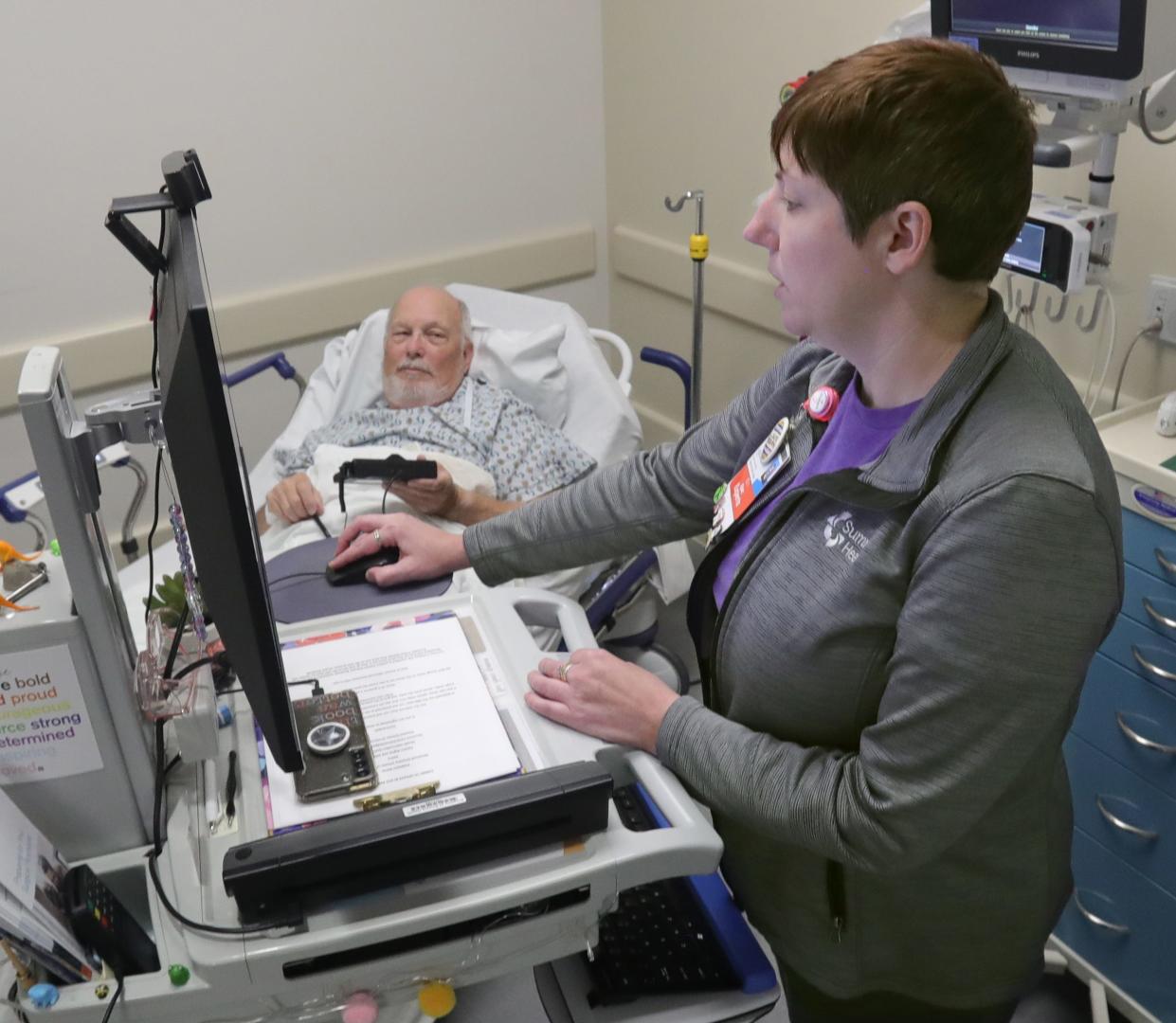
- Oops!Something went wrong.Please try again later.
Akron's largest health care systems weathered the storms of the COVID-19 pandemic and had to make changes — many of which are still in place and aren’t going anywhere.
Outpatient, in-home or virtual appointments — a necessity during the height of the pandemic — have become the preferred way to provide medical care in many cases.
Although fewer people are being treated in the hospital now, those who do require inpatient care are more seriously ill, particularly after delaying screenings and treatments during the height of the pandemic.
And staffing challenges that got worse during the pandemic continue to plague hospitals in Akron and throughout the region.
The Beacon Journal spoke with the leaders of Akron’s three hospital systems to find out how COVID-19 affected their operations, what changes they had to make and how they are doing now as we emerge from the pandemic. The leaders all acknowledged the worst of COVID-19 pandemic has passed but said the virus and its effects still are present.
'We're taking care of a lot of people at home'
Hospital operations are different after COVID-19, said Dr. Cliff Deveny, president and CEO of Summa Health, which operates Akron City Hospital, Barberton Hospital, a rehab hospital and a network of outpatient facilities and physician practices, as well as insurer SummaCare.
Traditional hospital footprints were already shrinking before the pandemic and Summa was intentional about that, said Deveny.
“Today, there's 585 people in the hospital so we're managing it but we're taking care of a lot of people at home,” Deveny said during a phone interview in June. “We have probably at least 6,000 people that will have some kind of outpatient service today, a surgery or a lab test or radiology tests. And then you've got probably 10,000 or 15,000 physician office visits today.”
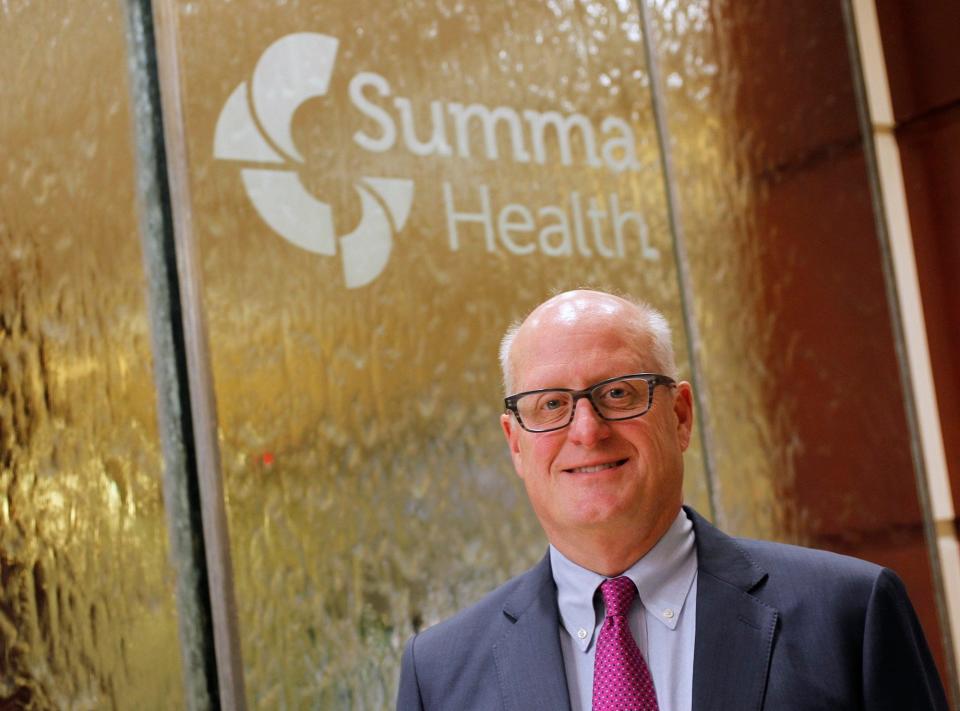
Deveny said health system officials knew that a lot of people who had traditionally been in the hospital before weren’t going to be in the future. As medical technology has improved, patients who need new heart valves, hip surgeries and hysterectomies now may go home the same night instead of staying for six to eight days.
"That transition to the ambulatory setting and back to home has worked,” he said. “We take care of between 1,500 to 1,600 people in their homes and about 180 people in hospice care at home. So, we have almost 2,000 people that we are providing services and care to in the home, and in the old days they may have been in a nursing home or they may have been in the hospital.
"... We are constantly trying to be more efficient and do things differently,” Deveny said.
He became Summa’s CEO in 2017. He was a practicing obstetrician/gynecologist in Akron for 20 years and then left to pursue hospital leadership positions in other states.
His current contract goes until March 2025, he said.
Growth of virtual care during and beyond COVID-19
Dr. Brian Harte, president of Cleveland Clinic Akron General, said he hopes the local health care system is better after COVID.
“We've certainly learned some lessons around things like virtual care. Some subspecialties have adopted virtual technologies and in some cases that's been persistent,” he said. “As an example, much of behavioral health, and not just with the Cleveland Clinic but with other organizations, is now virtual, and that’s great. That’s because of patient preference but our practitioners appreciated it as well, and you really need both. A lot of primary care wellness checks, especially for kids, can often be done virtually as well as post-op care and even, in some cases, some aspects of hospital care.
“So I think the lesson we've learned is that we're much more comfortable than we might have been otherwise, and we've benefited from that push,” said Harte, who has been president of Akron General for nearly seven years and is under an annual contract.
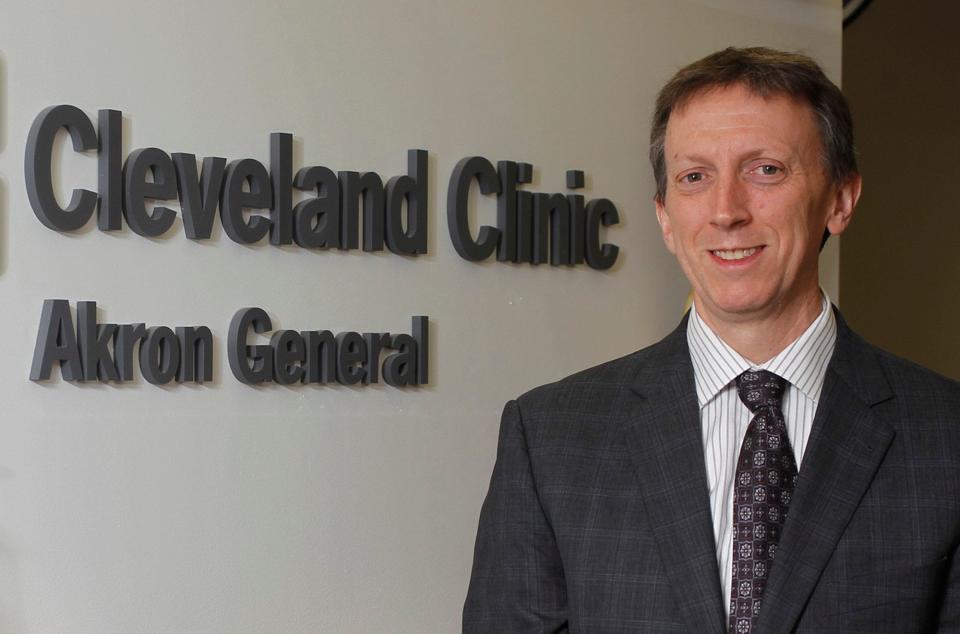
Effective Aug. 1, Harte’s role expanded and in addition to heading Akron General, he was named president of the health system’s south market, which includes Medina Hospital, Lodi Hospital, Mercy Hospital and Union Hospital, as well as family health centers and outpatient facilities in the region.
Local hospitals mirror national trend toward outpatient and home-based services
Nationally, there is a continued shift from inpatient to outpatient and home-based services, said Thomas Campanella, health care executive in residence and professor emeritus at Baldwin Wallace University.
The whole telehealth arena and care in home were increasing prior to COVID-19 and then escalated because of COVID and will continue, he said.
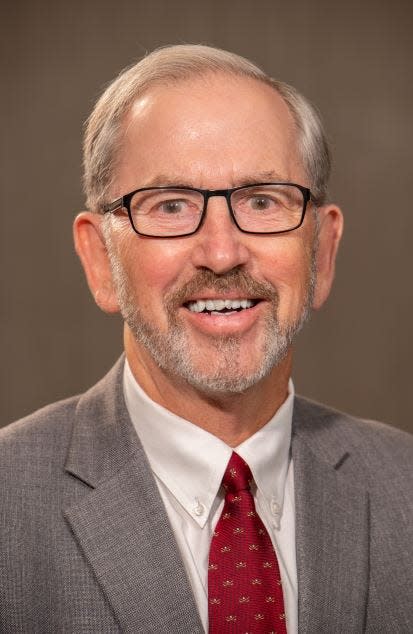
Virtual visits are going to be a big game-changer, especially in rural areas, which still need better broadband access, said Campanella. But telehealth will bring specialists to patients who otherwise never would have access, he said during a virtual interview.
Many of the medical device technology companies were also already starting to invest in virtual care in a home setting because they felt they could get a good return on their investments, Campanella said.
“That’s where capitalism comes in, and it’s ramping up like crazy from that standpoint,” he said.
As care shifts more to outpatient and home-care settings from inpatient care at hospitals, there will be more local, regional and national competitors coming in to provide that “niche” care, said Campanella.
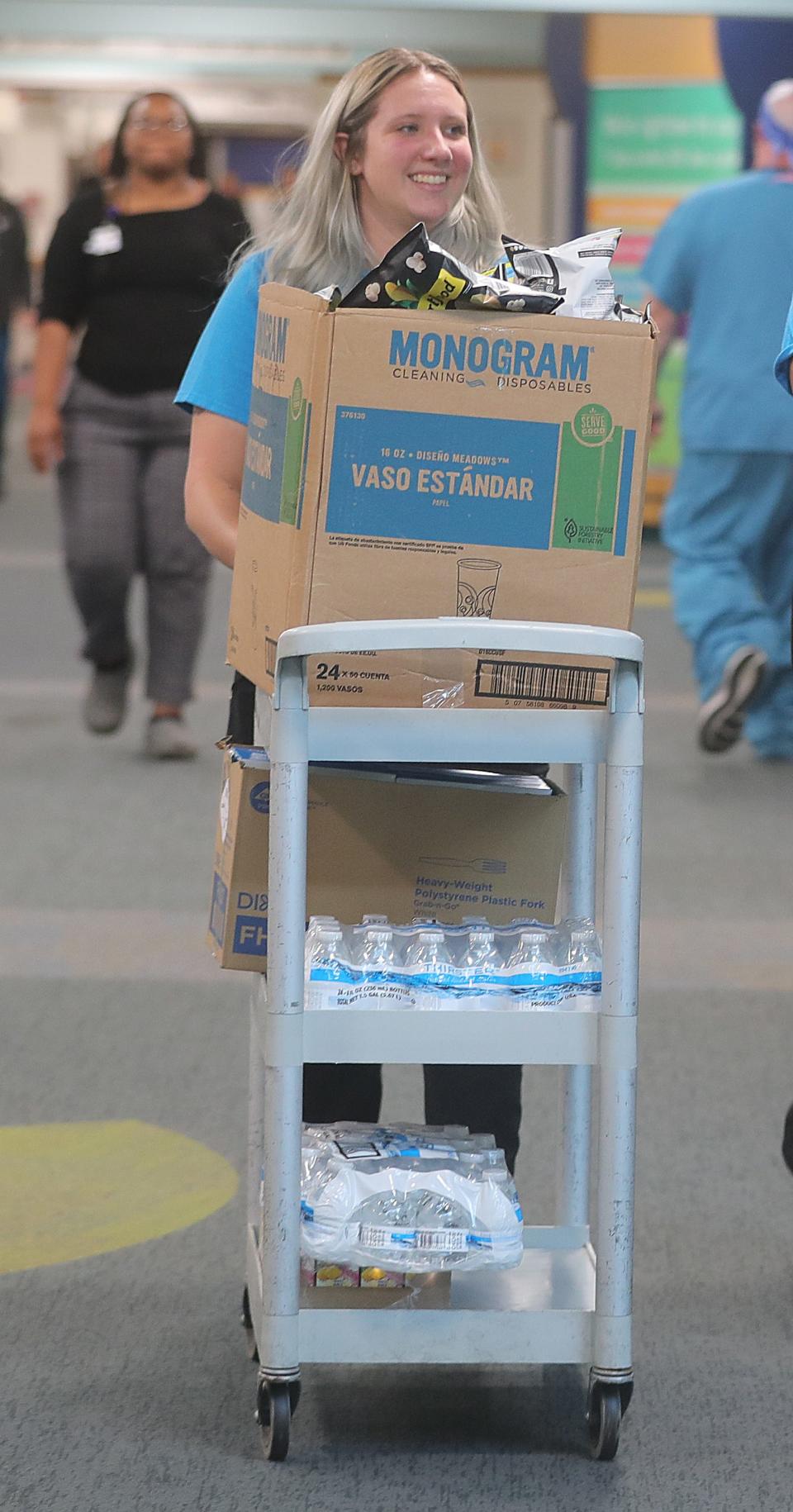
Labor shortages weren’t just nurses and doctors
Hospitals locally and nationwide saw a wave of doctors, nurses and other staffers leave the industry during the pandemic. They also saw a huge need for travel nurses, who were being paid at premium rates as staff nurses were overworked and leaving to become travel nurses. The American Hospital Association in 2022 called for federal investigations into price-gouging by some travel nurse companies, which had doubled their rates during the pandemic. Some staff nurses reported travel nurses making triple their salary.
“The biggest thing that COVID did was it took a very stable predictable business model and made it very fragile, specifically around workforce and the predictability of being able to assemble a workforce,” said Deveny. “We saw people question whether they wanted to be in the profession, you saw people retire, you saw a whole industry of temporary labor pop up. You saw society relook at the value of certain professions and roles and how they were paid and how they may have been treated.”
Help needed: Nursing industry facing crisis beyond the COVID-19 pandemic
Hospitals were already hearing complaints of staffers being burned out or stressed or too overwhelmed by documentation and medical and legal risks, even before the pandemic, Akron Children’s Hospital President and CEO Chris Gessner said during an interview at the hospital in June.
“Health care was in such a crucible,” said Gessner, who came to lead Akron Children’s in October 2021 during the pandemic and who is on an annual contract. “All of these things are stressing providers out, but then you layer on a once-in-100-year pandemic and that put some people over the top.”
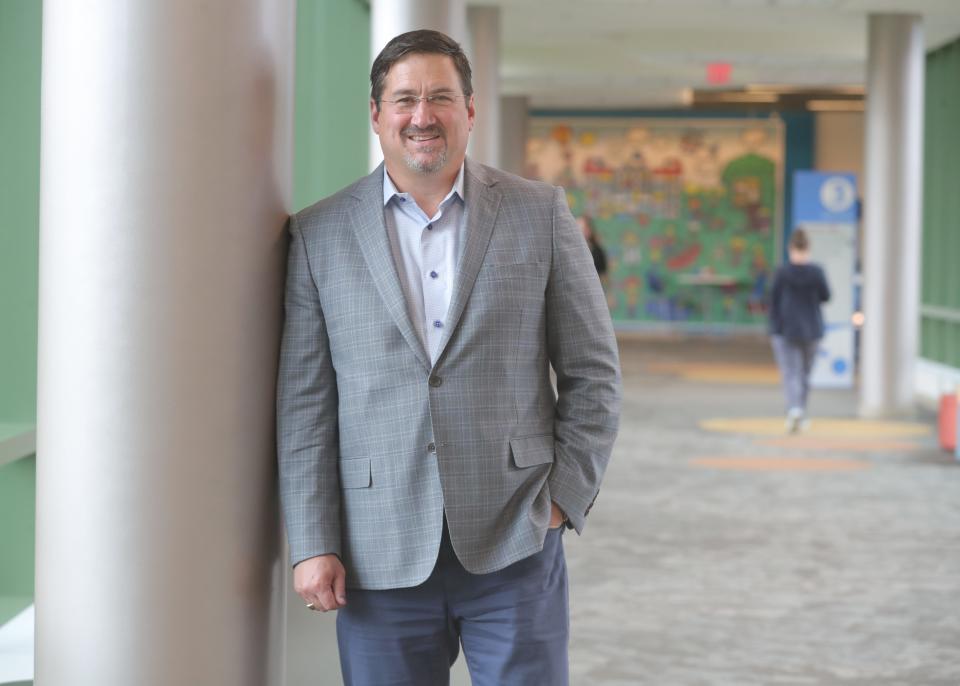
Expenses for all hospitals across the country went up when it came to labor, and it wasn’t just nurses, but respiratory therapists, radiology and MRI technicians and other staffers, said Deveny.
“There's a national shortage of people that can even work in health care IT, and so you're seeing that it's now kind of like the next wave of where you're having to pay premium dollars,” he said.
With a limited number of people with those types of specific skill sets, low unemployment and several health care systems with the same openings, “you've got more demand, but you don't have the necessary assembled workforce of people to take care of it,” Deveny said. Hospitals had to aggressively get back to training people or moving them from other parts of the country, he said.
'The perfect opportunity': New Akron Children's CEO Chris Gessner ready for challenges
Gessner said hospitals also are competing against other industries for qualified workers.
“We need attorneys, facility staff, environmental staff, food service staff. All of those areas have significant competition from other organizations,” he said.
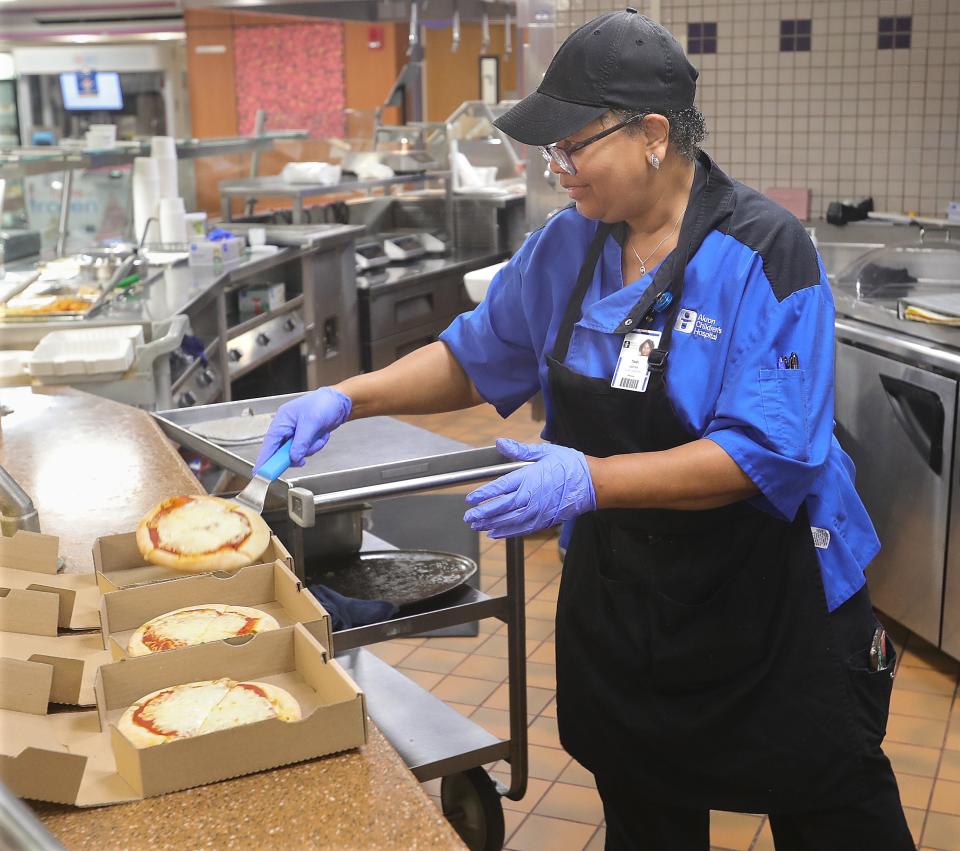
At Akron General, Harte said it’s still challenging.
“We continue to rely upon travelers. We continue to have hundreds of open positions at Akron General and throughout Cleveland Clinic. And the labor that we do have is in many cases more expensive,” he said. “That makes the mission more challenging to execute, but it doesn't make us any less resolved to fulfill it.”
Hospital employment numbers grow
In an analysis of total employment numbers for all three Akron-area hospitals from 2019 to 2023, the hospitals ebbed and flowed in their employment numbers — especially during 2020 — but are all back up to pre-pandemic employment levels or higher.
Akron Children’s Hospital employed 6,562 in 2019 and now employs 6,970, including 5,289 within the city of Akron. Cleveland Clinic Akron General employed 5,454 in 2019 and now employs 5,421, including 4,596 in Akron. Summa remains one of the largest employers in Akron and Summit County. It reported 7,516 in 2019 and now employs 8,334, including 6,283 in Akron.
Despite hiring challenges, the three Akron health care systems are among the largest employers in the region.
That's not necessarily a good thing.
“You don’t really want your health care industry to be your No. 1 employer because it’s a service industry, so we’re just recirculating dollars as opposed to exporting dollars and bringing new money into the community,” said Gessner.
Campanella, the retired professor, agreed.
“When your biggest employers are the health sector and the government, neither of those organizations pay taxes” to support schools or infrastructure, he said.
Because they are nonprofit organizations, Akron’s three major hospital systems don’t pay property taxes, though their employees do pay income tax.
The lack of tax revenue may force communities to raise property taxes, which does not entice young people to move to your area, Campanella said.
Lessons learned from the COVID-19 pandemic
COVID-19 forced health systems to learn things quickly and to adjust quickly, said Campanella.
“They were forced to do things and decisions that needed to be made were forced to be made because of COVID,” he said. “Sometimes you need to have a crisis to sort of get away from the inertia of the status quo.
“Telehealth was obviously an example of that,” he said. The pandemic also accelerated the movement to outpatient and in-home care settings.
“The real question will be: As the market becomes more competitive, how will (health systems) be able to keep their market share or grow their market share when there’s more competitors out there?”
Beacon Journal medical reporter Betty Lin-Fisher can be reached at 330-996-3724 or blinfisher@thebeaconjournal.com. Follow her @blinfisherABJ on Twitter or www.facebook.com/BettyLinFisherABJ. To see her most recent stories and columns, go to www.tinyurl.com/bettylinfisher
This article originally appeared on Akron Beacon Journal: Operations, care at Akron-area hospitals have evolved since COVID-19


